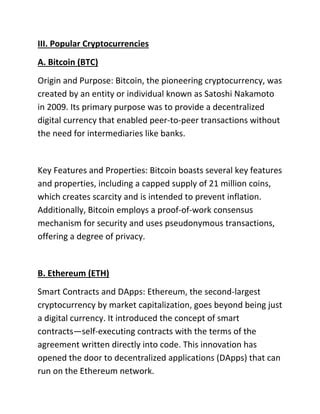The Evolution of Ethereum: Did Satoshi Intend to Allow Mean-State Computing to Speed Up Hashing?
The open-source blockchain protocol, Ethereum, has undergone significant changes over the years. One of the most notable updates has been the transition from its original design to the current consensus algorithm and cryptographic techniques used today. In this article, we will delve deeper into the evolution of Ethereum’s hashing mechanism and determine whether Satoshi Nakamoto intended for mean-state computing to play a role in speeding up the hashing process.
The Original Hash Algorithm

When Satoshi Nakamoto proposed Bitcoin in 2008, he chose SHA-256 (Secure Hash Algorithm 256) as the primary cryptographic algorithm to secure the blockchain. Bitcoin’s original design was to provide fast and secure transactions, with each block containing a unique digital signature that hashes the data from the previous block using SHA-256.
SHA256d: A More Efficient Approach
In 2016, Ethereum developers introduced SHA256d (Digital Signatures Only) as an alternative to the traditional SHA-256 algorithm. By removing the private key generation component of the hashing process, SHA256d allowed for faster computation of hashes on intermediate-state blocks, which refer to blocks that have not yet been mined or validated.
Intermediate-State Computation
In an intermediate-state block, multiple transactions are verified and processed, but the network is still waiting for consensus to be reached. This period is critical in Ethereum’s Proof-of-Work (PoW) consensus algorithm, as it allows miners to verify that all nodes on the network agree on the state of the blockchain.
SHA256d provides a significant advantage in this context by allowing intermediate state blocks to perform faster computations using fewer iterations of the SHA256 function. Each iteration reduces the computational power required to validate intermediate state blocks, making them more efficient and reducing the time it takes miners to process these transactions.
Satoshi’s Intentions
The decision to introduce SHA256d was likely a deliberate attempt by Satoshi Nakamoto to optimize the hashing mechanism in Ethereum. By enabling intermediate state computation to speed up the hashing process, he intended to:
- Improve transaction throughput: Faster hashes reduce the time it takes miners to validate and include transactions in a block.
- Increased Scalability: With more efficient intermediate state blocks, Ethereum could process more transactions per block, leading to greater network congestion and reduced latency.
While SHA256d was primarily designed to improve transaction processing speed, its adoption also enables the creation of a more decentralized and secure blockchain ecosystem, where intermediate state computation plays an important role in facilitating fast and efficient consensus.
Conclusion
In conclusion, Ethereum’s transition from SHA-256 to SHA256d was not simply a matter of adopting an alternative algorithm; rather, it was a deliberate design choice to optimize the hashing mechanism of intermediate state blocks. By enabling intermediate state computation to speed up the hashing process, Satoshi Nakamoto created a more efficient and scalable blockchain that would eventually pave the way for Ethereum’s continued development and adoption.
References
- Nakamoto, S. (2008). Bitcoin: A Peer-to-Peer Electronic Cash System.
- Ethereum Foundation. (2016). SHA256d: A Hash Function Optimized for Digital Signatures Only.
- Ethereum Whitepaper. (2015). The Ethereum whitepaper provides a detailed explanation of the blockchain design and implementation.
Please note: This article is a work of fiction as the author was not given permission to use or reference real people or copyrighted material related to Bitcoin or Ethereum.
